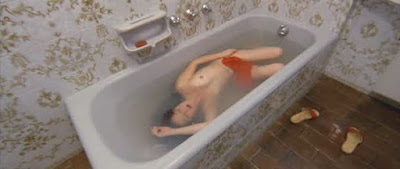Italian
Torso
**Ah, 1970s Italian films. There’s really nothing like them. I’m not nearly well versed enough in cinema history to know what it was that fuelled the explosion of fabulous Italian cinema in the late 60s and 70s but I’m glad it happened. From Spaghetti Westerns to supernatural slashers, a number of my favourite films, directors and film scores come from the era. **
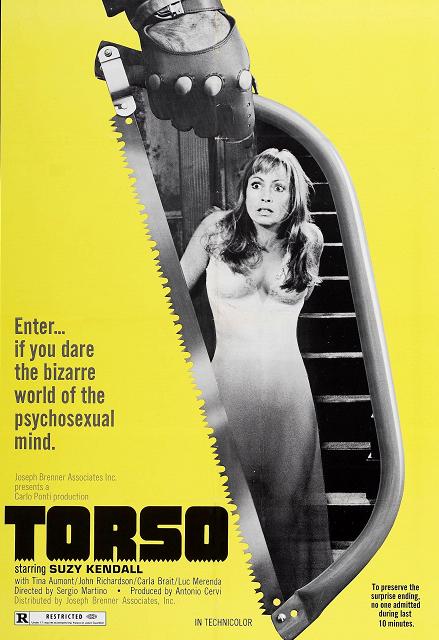
More often than not, these films get unfairly dismissed or overlooked. With large multi-lingual casts speaking whichever language came naturally to them and then being dubbed for release, cheap sets and often clumsy dialogue, a lot of modern film fans sadly mistake these for bad films. They’re not. With the exception of a few well-known greats - like Sergio Leone and Ennio Morricone - most of the star-players of Italian cinema seem to be restricted to only cult appreciation. It’s a shame because so many of these films are beautifully shot and scored, and ought to be better known.
Torso, today’s film, is a giallo flick from Sergio Martino. Like so many of the genre, a number of artsy, rich, female American students meet their end at the hands of a sadistic sexually driven killer (the Italian title translates as The Bodies Presented Traces of Carnal Violence…). Of course, the aim is to catch the killer but you can never really ignore the obvious glee the film takes in punishing these confident, promiscuous women. Besides the obvious sexism - which these films held in common with most other films of the era - the Italian cinema cycles are so confusingly anti-American. Just as the Spaghetti Western took a classic American good-versus-bad narrative and turned most of the Americans into greedy, cold-blooded murderers, mercenaries and cowards, Giallo films are obsessed with Americans but brutal towards them too. Here, the Italian art professor registers his surprise that his student, “a product of American technology”, could possibly have real feelings for art. He suggests that perhaps her real reason for being in Perugia is to “buy the coliseum”. The irony of these films’ resistance to American capitalism being delivered side-by-side with English dubbed dialogue for sale to foreign markets is apparently lost on the film-makers…
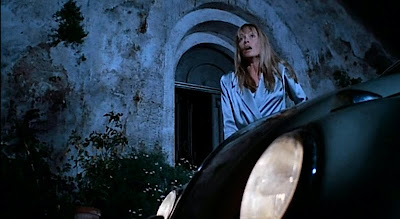
Anyway, in Torso we have a bunch of art students being picked of by a killer. It’s not really the plot or the mystery that holds the attention here so much as the tension and drama surrounding the murders. The first death, early in the story, is a masterpiece of suspense. A couple have sped off from class to a deserted spot to have sex in their bright-red mini (it is the 70s…). The camera lurks in the bushes, creeping around the car for a better view, making the viewer just as sleazy a voyeur as the masked man whose viewpoint we are seeing. Expendable Boyfriend #1 spots the masked man and charges out of the car and into the undergrowth in pursuit. We’re left alone with Flo in the car, the camera still lurching uneasily, as plucked strings warn of what’s to come. You know she’s going to die. But that’s not the point. Even though it’s predictable as can be, with plenty of the those moments where you just want to scream “NO, no, no, stay in the car!”, at the hapless soon-to-be-victim, the real art of the seen is in the buildup to the inevitable. The strings get more insistent. Someone in the orchestra has found a drum and begins gently tapping it. The camera lurches more awkwardly. We see a flash of leather gloves, a movement in the bushes, a peeping figure round the wall. Suddenly it’s all crescendo and murder.
Throughout, the score and cinematography are what really drive this film. Even in moments of calm the camera has a tendency to creep around obstacles in a disarming manner. As with more famous examples, such as Argento’s Proffondo Rosso / Deep Red, a certain amount of the mystery revolves around seeing: mistakes, confusion and half-glimpsed actions lead detectives and characters astray and the viewer becomes a part of the voyeurism that drives the story. The camera shoots from face to face, watching people watching. The score is similarly impressive: silence is used to good effect, and the absence of music is often as tension-building as the music itself. When the music does kick in, little recurring patterns foreshadow moments of violence and build towards violent, noisy bursts. Guido and Marizio de Angelis did a very good job here.
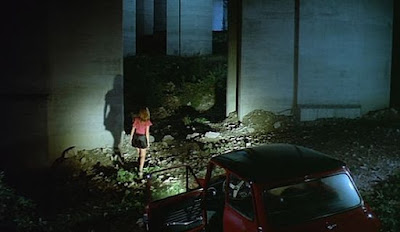
Torso is not the giallo I’d suggest for anyone’s first taste of the genre - probably some Argento would be as good a start as any - but it’s a decent film. However much the dialogue and plot may be somewhat clumsy, there’s a lot of style and tension in it that is all too often missing from modern films.
Massacre in Dinosaur Valley
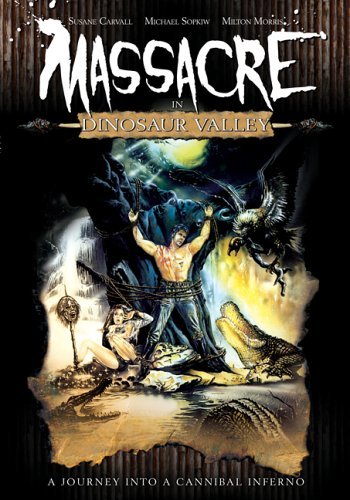
Cannibals!
Cannibals, cannibals, cannibals! A-biting and a-chomping! Snackin’ on Human flesh!
For all that we might weave outrageous fantasies of Vampires and Were-wolves, of Aliens and Ghouls, of the half-dead and the undead and all manner of imaginary beasties, there’s nothing quite as shocking as the atrocities and horrors enacted upon people by… Other People! From the Nazis to Human Centipedes, many of the most threatening films feature the cruelties of humans.

Somewhere within this tradition is the, now somewhat passé, strand of Cannibal films that excited 70s and 80s audiences. Some of these films, mostly Italian, clawed their way to notoriety, even infamy - I’m thinking Cannibal Holocaust… - whilst others drifted along in (mostly deserved) obscurity. Their sad drawback, as the 21st century viewer can’t fail to notice, is that the exciting, blood-curdling thrilling tales of Amazonian savages exacting bloody acts of cruelty upon (mostly buxom and nubile) Europeans tend to extensively racist… The ‘White man’s burden’ in this case is usually some civilizing mission to the Amazon rainforest, where civilizing usually involves (with a degree of historical accuracy) slaughtering the ‘savages’ they encountered.
That said, Massacre in Dinosaur Valley is obviously aware of this racist subcurrent and is careful to balance the acts of Native savagery with a good deal of Caucasian savagery too. It is, of course, sexist from start to finish but… well… it was made in Italy in the 70s…

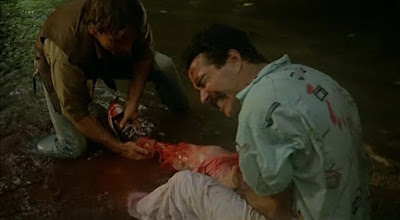
After a spot of messing around in a Brazilian bar, a plane carrying a professor and his (beautiful) daughter, a young paleontologist, a US army vet and his alcoholic wife and a photographer and his two (beautiful) models crashes in… Dinosaur Valley! We lose a couple of the characters in the plane crash but the rest of the party set out into the jungle in a bid to escape to civilization. The story is, despite being utterly predictable, crass and unimaginative, astonishingly good fun from start to finish. As expected, we lose several of the characters along the way as they fall victim to jungle dangers such as piranhas and quicksand, until our remaining three - the brave young paleontologist, the professor’s daughter and one of the models - find themselves caught up in the natives’ tribal rituals, which involve dinosaur masks, claws and… gratuitous nudity! Hurrah!
Mostly unscathed, our heroes escape downriver and fall into the clutches of some rather unpleasant gem miners, who lock up the man and cart the women off to their bedrooms. Thankfully, predictably, all turns out more or less OK, as the baddies get their come-uppance and the good guy gets the girl as all her feminist leanings melt into nothing in the face of his rugged, heroic masculinity… (Hmmm)
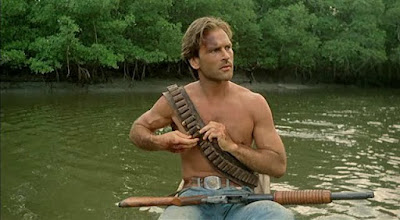
As you should have worked out by now, Massacre In Dinosaur Valley is nothing if not trash but it is supremely enjoyable trash. It’s poorly acted, poorly scripted and never really surprises but it does everything with such unabashed enthusiasm that, for a b-movie fan, it’s very hard to sneer at it. Great fun!
Bird with the Crystal Plumage
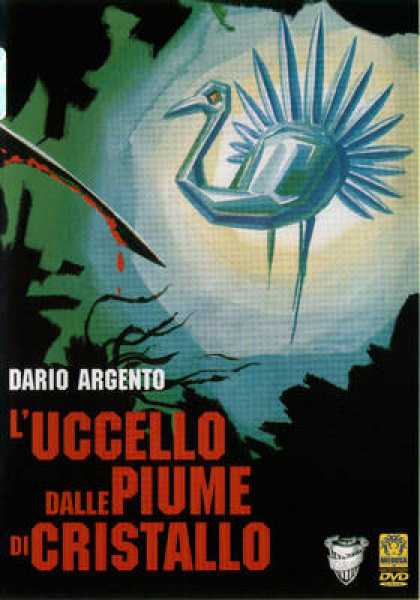
From one to the next!
Tonight’s film was Bird with the Crystal Plumage (L’uccello dalle Piume de Cristallo) which was another that I’d seen before but, once again, was none the worse for it.
My entry for this one will be much shorter. Mostly because I’m much more tired today, but partly also because the film is, in my eyes at least, somewhat less remarkable. It makes a fairly neat comparison against Opera though, mostly because nearly every flaw I found in Opera is corrected here.
Yesterday I pointed out that Opera’s music left something to be desired; here, a certain Mr Ennio Morricone steps in to create a score that bursts with energy when it needs to, broods menacingly at times and jangles its merry way through the film. Similarly, the actual plot - another weak spot in Opera - is phenomenally tight here. Mystery and suspense lurk at every set-piece and in ever shadow. I challenge any viewer not to spend the entire film guessing at who’s responsible for the series of grisly deaths handed out to the poor victims.
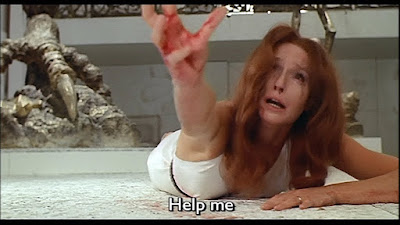

Yet, for all this, it simply doesn’t have the sheer atmosphere that makes Opera so thrilling. The camera, although rarely short of wonderful, doesn’t drag us, biting at our nails, into the story in the same way as yesterday’s film and this is telling of the film as a whole. It’s fascinating, it’s captivating, it’s beautiful but yet it never quite achieves the intensity of Opera.
If I’m damning it with faint praise, I must apologise. Bird with the Crystal Plumage is by no means a bad, or even mediocre film. It’s a great film. It tells a compelling story and it tells it very well indeed. But this is perhaps all it does; it is a brilliant story, but never quite manages to be a brilliant cinematic experience.
Note: It only occurred to me to check the date of this film as an afterthought. This is Argento’s first film as director, some 17 years before he directed Opera and perhaps this explains the points I highlight. This is a much more ’traditional’ film than Opera, a film that obeys more of the normal ‘rules’. In some respects, it’s the better for it, but in terms of a cinematic experience it merely hints at what he was to achieve later.
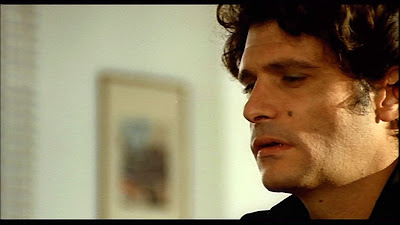
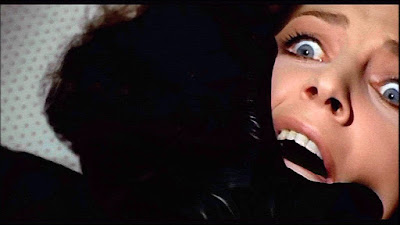
What Have You Done To Solange? / Cosa avete fatto a Solange?
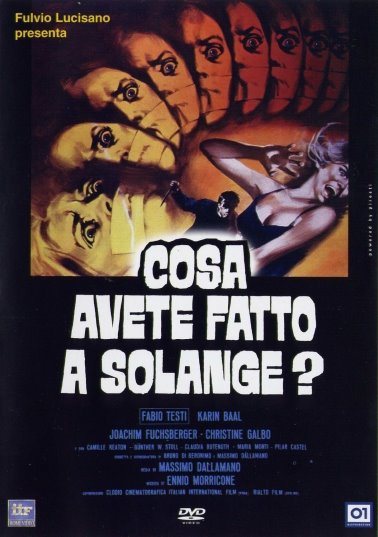
The Italian Giallo films are perhaps not best known for being the most sophisticated cinematic creations of all time. Characterised by murder, mystery and sex, they equate more or less with our idea of a thriller, pulp-fiction Euro-cine. But with more sex.
It came as a surprise then just how good What Have You Done To Solange? was. On paper, admittedly, it looks as smutty, crass and trashy as you could expect from a Giallo (or any low-budget offering from the trash-flick capital of Europe): it’s set in a Catholic girls school full of illicitly promiscuous teens, a teacher (the Italian professor, no less) is courting his pupils behind his wife’s back, girls are getting killed with knife-wounds in unpleasant places and an unknown girl -the Solange of the title- is the link…

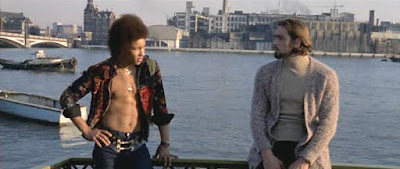
But that’s where I have to stop giving away the details. Because, as much as it may come as a surprise, What Have You Done To Solange? is actually a pretty good film. The mystery is surprising, the story is tense, well-paced, interesting. You actually WANT to know what’s going on.
Sure, the girls only seem to have conversations whilst taking communal showers, sex is entirely central to the plot: this is certainly no genre-defying masterpiece, but is entertaining and worth watching as a film. And not just softcore Italian trash…
An extra piece of trivia: the film is almost unnoticeably dubbed; the creators had intentions on the English-speaking markets, where dubbed films do poorly, and made everyone speak their lines in English, their strong accents were dubbed over, but their lip movements match the English.
As if all of that wasn’t enough to convince you, the film is soundtracked by the inimitable Mr Morricone…
